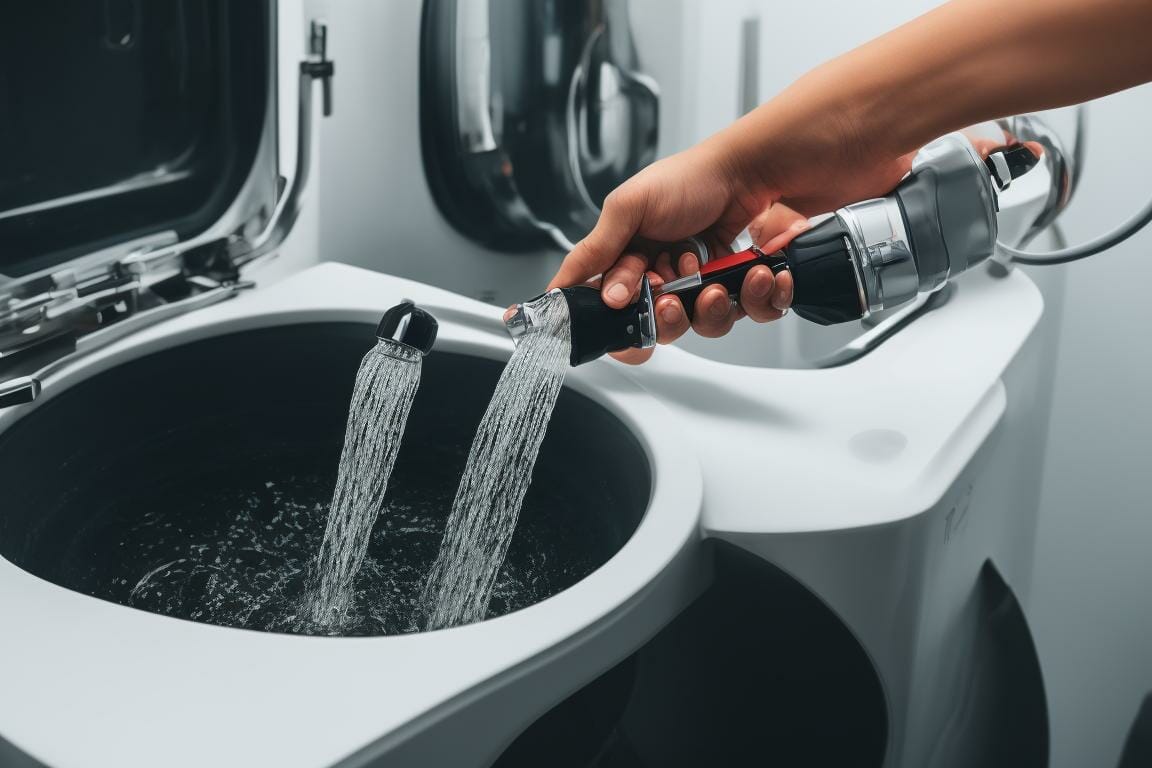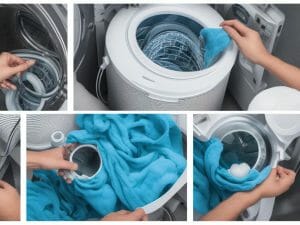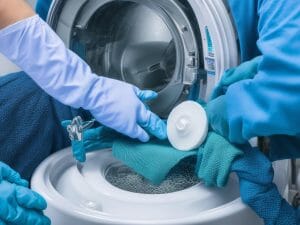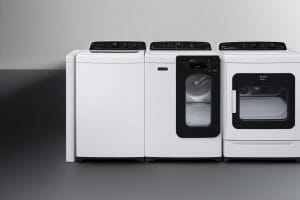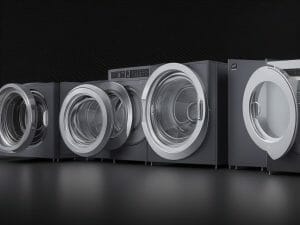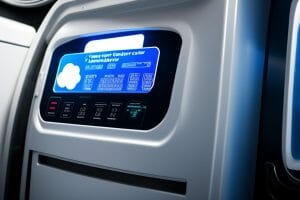Installing and Maintaining Your Portable Washer
Are you tired of lugging your laundry to the laundromat every week? Are you yearning for the convenience of doing your laundry in the comfort of your own home? Well, look no further!
In this article, we will guide you through the process of installing and maintaining your very own portable washer. Say goodbye to the hassle of laundry day and hello to the convenience of having clean clothes at your fingertips.
So, let’s dive in and discover how you can make laundry a breeze!
Choosing the Right Location
You should choose a location for your portable washer that is close to a water source and has a power outlet nearby. When considering the plumbing requirements, make sure there is easy access to a water supply and a drain. Ideally, you want to place the washer near a sink or a laundry room with existing plumbing connections. This will ensure a smooth installation process and prevent any potential leaks or water damage.
Take into account the electrical considerations. The washer should be located near a power outlet to avoid using extension cords, which can be a safety hazard. It is important to ensure that the outlet can handle the power requirements of the washer without overloading the circuit.
Assembling Your Portable Washer
When it comes to assembling your portable washer, there are several required steps that you need to follow. These steps ensure that the washer is properly set up and ready for use.
Additionally, it’s important to be aware of common issues that may arise during assembly and how to troubleshoot them. This will help you quickly address any problems and get your washer up and running smoothly.
In addition to assembly and troubleshooting, proper maintenance is crucial to keep your portable washer in optimal condition. Regular cleaning and maintenance tasks, such as cleaning the filters and checking for any leaks or loose connections, will help extend the lifespan of your washer and ensure it continues to work efficiently.
Required Assembly Steps
To assemble your portable washer, start by attaching the hoses to the water inlet and drain outlet. Make sure to tighten the connections securely to prevent any leaks. Here are the required assembly steps:
- Connect the water inlet hose to the water faucet using the provided adapter. Ensure a tight fit to avoid any water leakage.
- Attach the other end of the water inlet hose to the washer’s water inlet valve. Again, tighten the connection properly.
- Connect the drain outlet hose to the washer’s drain outlet. Make sure it is securely fastened to prevent any water overflow during the washing process.
- Plug the power cord into a properly grounded electrical outlet. Handle the electrical connections with care to avoid any accidents.
Remember to choose the right detergent for your portable washer, as using the wrong type can damage the machine. Additionally, always follow the manufacturer’s instructions for electrical connections to ensure your safety.
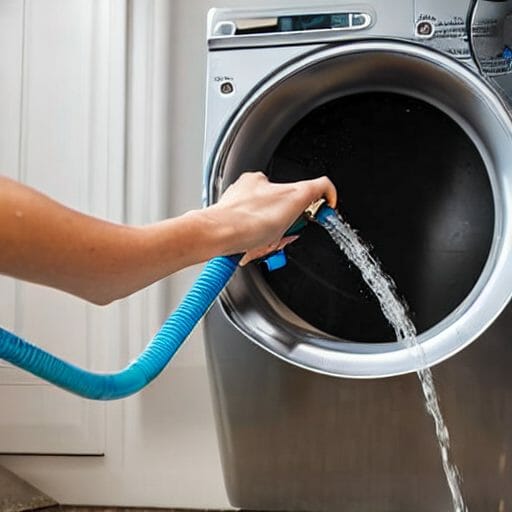
Troubleshooting Common Issues
If your portable washer is experiencing common issues, such as not turning on or not draining properly, refer to the troubleshooting guide provided by the manufacturer.
However, if you want to try fixing the problem yourself, here are some tips.
When troubleshooting motor issues, first check if the power cord is securely plugged in and the outlet is functioning correctly. Also, inspect the control panel for any error codes or indicators that may point to a specific problem. If the motor is not running, it could be due to a faulty motor capacitor or a broken belt.
For fixing drainage problems, ensure that the drain hose is not kinked or clogged. You can also check the pump filter for any debris that may be obstructing the flow of water.
Proper Maintenance Tips
For optimal performance, regularly clean the drum and detergent dispenser of your portable washer. Proper maintenance is essential to keep your washer running smoothly and to avoid rust and other issues. Here are some tips to help you maintain performance of your portable washer:
Connecting the Water Supply
When connecting the water supply to your portable washer, it is essential to ensure proper hose attachment. This includes securely fastening the hose to both the water source and the washer inlet.
Additionally, it is crucial to consider the water pressure requirements of your portable washer to ensure optimal performance and prevent potential damage.
Proper Hose Attachment
To ensure proper hose attachment, it’s important to securely fasten the hose to the water source and the washer. Here are some tips to help you with the proper attachment of your hose:
Water Pressure Requirements
Make sure you check the water pressure requirements before connecting the hose to the water source. Proper water pressure regulation is essential for the efficient operation and longevity of your portable washer.
Excessive water pressure can damage the internal components of the washer and cause leaks, while insufficient pressure can result in poor cleaning performance. To maintain the optimal water pressure, consider installing a pressure regulator or adjusting the water source’s pressure using a valve.
It is recommended to keep the water pressure between 20 and 100 pounds per square inch (psi) for most portable washers. Regularly check the water pressure to ensure it stays within this range.
Ensuring Leak-Free Connections
Now that you understand the water pressure requirements for your portable washer let’s move on to another important aspect of installation and maintenance: ensuring leak-free connections.
By taking the necessary precautions, you can prevent water damage and keep your portable washer functioning efficiently. Here are some steps to follow:
Operating Your Portable Washer
Once you’ve plugged in your portable washer, it’s time to start selecting your desired wash cycle.
To ensure effective cleaning, it’s crucial to use detergent properly. Begin by referring to the manufacturer’s instructions for the recommended amount of detergent based on your load size. Measure it precisely to avoid excessive sudsing or insufficient cleaning.
Next, adjust the water temperature according to the fabric care label. Most portable washers offer options for hot, warm, or cold water. Hot water is ideal for heavily soiled items, while cold water is suitable for delicate fabrics. Remember to balance the water temperature with the detergent’s requirements.
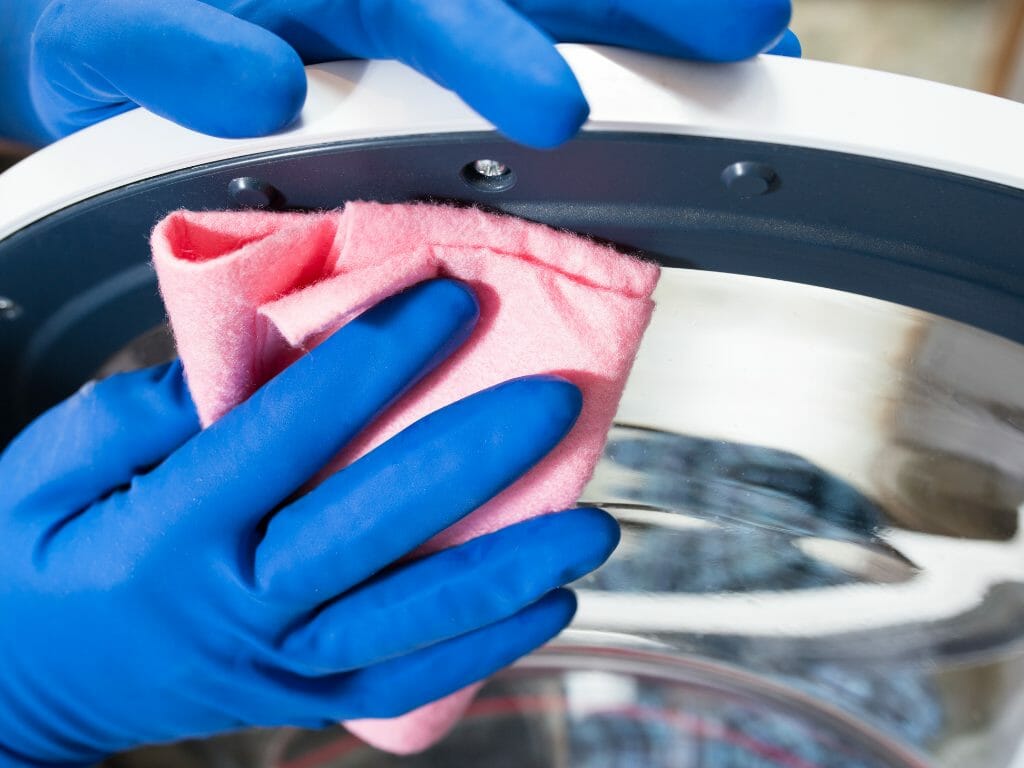
Cleaning and Maintenance Tips
To keep your portable washer in good condition, it’s important to regularly clean the drum and filters to prevent buildup and maintain optimal performance. Here are some cleaning techniques to help you maintain your portable washer:
Troubleshooting Common Issues
If your portable washer is not spinning or draining properly, it could be due to a clogged filter or a faulty drain pump. Diagnosing problems with your washer can help you find common solutions and get it working again.
Start by checking the filter located at the bottom of the machine. Remove any debris, lint, or foreign objects that may be blocking it.
Next, inspect the drain pump for any signs of damage or blockage. If the pump is faulty, it may need to be replaced.
Finally, make sure the drainage hose is not kinked or clogged. Straighten it out if necessary or clear any obstructions.
Frequently Asked Questions
How Much Electricity Does a Portable Washer Consume?
A portable washer consumes a varying amount of electricity depending on its energy efficiency. When comparing the electricity consumption of portable washers, look for models that have higher energy efficiency ratings to save on electricity costs.
Can I Use My Portable Washer in an Apartment With Limited Water Pressure?
Yes, you can use your portable washer in an apartment with limited water pressure. By utilizing a portable washer with a water pump, you can ensure adequate water flow. Additionally, consider alternative water sources for your portable washer.
Are Portable Washers Suitable for Washing Delicate Fabrics?
Portable washers are suitable for washing delicate fabrics. They provide a gentler washing cycle compared to traditional washers, reducing the risk of damage. This is one of the many benefits of using a portable washer.
Can I Use My Portable Washer Outdoors?
Yes, you can use your portable washer outdoors. It provides convenient outdoor washing alternatives and allows you to enjoy the benefits of using a portable washer in outdoor spaces.
Is It Safe to Leave a Portable Washer Unattended While It Is Operating?
Leaving your portable washer unattended while it’s operating is not recommended. Safety precautions must be followed to avoid potential risks. Always stay nearby and monitor the machine to ensure a safe and efficient operation.
Conclusion
In conclusion, maintaining your portable washer is vital to ensure its longevity and efficiency. By choosing the right location, assembling it correctly, and connecting the water supply properly, you can maximize its performance.
Remember to follow the operating instructions carefully and clean the washer regularly to prevent any potential issues. An interesting statistic to note is that proper maintenance can increase the lifespan of a portable washer by up to 50%, saving you money in the long run.
So, take care of your washer and enjoy hassle-free laundry days.

